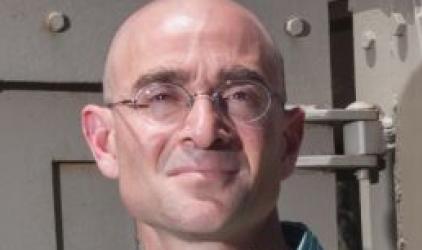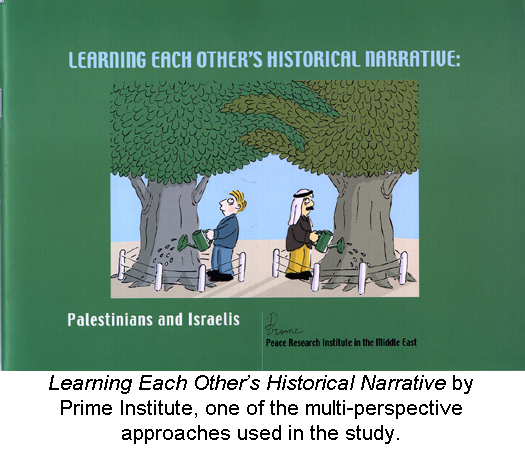Cutting Across Time: Histories, Identity and Inter-group Relations (Tsafrir Goldberg)

In the past decade, I have been exploring the relations of historical reasoning, learners’ identity and peer deliberation of charged historical topics. My interest in this line of research stemmed from my work as an Israeli high school history teacher working in a desegregated, highly diverse school. As a teacher of the history AP class, I had my students focus their inquiry projects on controversial national historical issues. With time, I started using students’ controversy projects as topics for peer discussion in the regular classes. These peer discussions of conflicting views and sources aroused learners’ interest and became the focus of my Ph.D.
My initial work was cognitive in focus, influenced by new ideas in history education (Lee; Wineburg; Perfetti et al.’s work) and argumentative theory (such as Deanna Kuhn). I traced the beneficial effects of learning through conflicting sources and peer deliberation. Learners evaluating contradictory and biased sources, and using these sources to engage in controversy with their peers, elaborated their historical reasoning and changed their narrative schemes. However, the cognitive perspective did not suffice to depict or explain all that took place in peer discussions. This was true especially in charged topics bearing upon learners’ ethnicity and interethnic relations, such as the Israeli “Melting Pot” policy of remolding immigrants’ identity and culture.
It was at this point that I was inspired by Terrie Epstein’s work on students’ ethnic identity and their stance towards historical information. In almost every phase of students’ learning process and application of historical disciplinary practices, I found the mark of identity. Some of the effects seemed quite straightforward, such as a preference for sources depicting the learners’ group favorably. Other effects seemed counter commonsensical, such as the privileged students’ stronger criticism of their ancestors’ role in historical events. Identity also interacted with disciplinary practice in complex ways, both biasing learners’ understanding and facilitating more articulate and introspective reasoning. Students of diverse ethnicities deliberated historical intergroup conflicts and inequalities but also used history as a way to reflect on their current relations and identity. I delved into this role of history in intergroup relations (deeply influenced by Keith Barton and Alan McCully’s work) later in my career due to an unfortunate incident.
Following the appointment of a conservative hawkish Minister of Education, a textbook I co-authored was criticized for presenting a Palestinian historian’s outlook alongside the Israeli official and academic perspectives in a historical controversy exercise. Right wing educators voiced anxiety that “Our students won’t be able to tell apart Palestinian propaganda from the truth.” The minister, who later claimed that acknowledging the Palestinian narrative amounts to disloyalty to our nation and enhances the conflict, pressured the publishers to shred the book and reproduce it in a cleansed version closely guided by the ministry to insure a “clear narrative.”
 Turning lemons into lemonade, I attempted to transform accusations into research questions: how would students apply disciplinary practice to charged conflicting perspectives? Would teaching conflicting historical perspectives harm in-group loyalty and intergroup relations compared to the clear official narrative? With the support of the National Academy of Education’s Spencer postdoctoral fellowship and the help of 200 Israeli Arab and Jewish high school students, I set out to explore the effects of studying the history of the Israeli-Palestinian conflict in a multi-perspective approach versus single official narrative.
Turning lemons into lemonade, I attempted to transform accusations into research questions: how would students apply disciplinary practice to charged conflicting perspectives? Would teaching conflicting historical perspectives harm in-group loyalty and intergroup relations compared to the clear official narrative? With the support of the National Academy of Education’s Spencer postdoctoral fellowship and the help of 200 Israeli Arab and Jewish high school students, I set out to explore the effects of studying the history of the Israeli-Palestinian conflict in a multi-perspective approach versus single official narrative.
Using social identity research methods, we could track both impact on learners’ identification with their nation and attitudes toward the “other.” The results of the study came as a mixed blessing. On the one hand, history teaching did make a difference, affecting attitudes towards the adversary’s perspective, and even actual intergroup interaction. On the other hand, findings showed that the single official narrative teaching, most common in our schools, had a distinct negative effect on both learners’ intergroup attitudes and interactions.
The findings of this study currently influence my work in two directions. The first is in systematically analyzing the relations between social identification and historical reasoning. The second is in following the implications of studying intergroup history on intergroup relations. I am currently involved in action research with teachers exploring the effect of studying the rise of Islam and medieval interfaith relations on students’ Islamophobia and stereotypes.

